
- The Location of Sagrada Familia: A Central Landmark in Barcelona
- Exploring the Architectural Wonders of Sagrada Familia
- How to Reach Sagrada Familia: A Visitor's Guide
- The History Behind Sagrada Familia's Construction
- Visiting Sagrada Familia: Tips for an Unforgettable Experience
- Why Sagrada Familia is a Must-See Attraction in Barcelona
The Sagrada Familia stands as a masterpiece of architectural wonder in Barcelona, capturing the imagination of millions. Designed by the renowned architect Antoni Gaudí, this basilica is not just a place of worship but a symbol of the city's rich cultural heritage.
As visitors flock to witness its intricate facades and towering spires, they are often left in awe. **The Iconic Sagrada Familia: Discover its Location in Barcelona** and immerse yourself in a unique blend of history, art, and spirituality that defines this extraordinary landmark.
The Location of Sagrada Familia: A Central Landmark in Barcelona
The Sagrada Familia is strategically located in the heart of Barcelona, making it a central landmark that is easily accessible to both locals and tourists. Situated in the Eixample district, it is surrounded by a vibrant neighborhood filled with shops, restaurants, and cultural attractions. This prime location enhances its visibility, drawing visitors from all corners of the city.
Not only is the Sagrada Familia a testament to Gaudí's genius, but its position also allows for stunning views of the basilica from various angles. Nearby parks and plazas offer perfect vantage points for photography enthusiasts. Among these locales, you can find:
- Parc de la Ciutadella: A lush park ideal for a leisurely stroll.
- Plaza de Gaudí: A popular gathering spot that boasts impressive perspectives of the basilica.
- Hospital de Sant Pau: A UNESCO World Heritage site located just a short walk away.
The Sagrada Familia is not only a religious site but also a hub of social activity, often hosting events and exhibitions that reflect its cultural significance. Its location within the city amplifies its importance as a destination not to be missed. Visitors can seamlessly blend their experience of the basilica with other nearby landmarks, creating a rich tapestry of exploration.
This architectural wonder is well-connected by public transportation, making it easy for visitors to plan their trips. The following table outlines key transportation options available:
| Transport Type | Details |
|---|---|
| Metro | L2 (Purple Line) and L5 (Blue Line) – Sagrada Familia Station |
| Bus | Multiple lines including 19, 33, 34, and H10 stop nearby |
| Tram | Tram line T4 has stops within walking distance |
Exploring the Architectural Wonders of Sagrada Familia
Exploring the architectural wonders of the Sagrada Familia reveals a treasure trove of artistic detail and innovative design. Gaudí's vision has transformed this basilica into a breathtaking example of Modernisme, characterized by its organic shapes, vibrant colors, and intricate details. The use of symbolism throughout the structure reflects Gaudí's deep spirituality and dedication to his craft, making each visit an enlightening experience.
The exterior of the Sagrada Familia showcases three distinct facades, each telling a different story. These are:
- Nativity Facade: Celebrating the birth of Christ with elaborate carvings and sculptures.
- Passion Facade: A striking portrayal of Christ's crucifixion, marked by its stark and dramatic style.
- Glory Facade: Still under construction, this facade will represent the final glory of Jesus through grand architectural elements.
Inside, the basilica's forest-like columns and stained glass windows create a magical interplay of light and color. Visitors often describe the interior as transformative, where the play of sunlight enhances the spiritual atmosphere. The combination of natural motifs and intricate craftsmanship exemplifies Gaudí's belief in harmony between nature and architecture.
Moreover, the ongoing construction of the Sagrada Familia, projected to be completed in the coming years, continues to inspire awe and anticipation. This living monument not only reflects Gaudí's genius but also symbolizes Barcelona's vibrant cultural identity. It stands as an enduring testament to creativity and faith, inviting visitors from around the world to explore its architectural wonders.
How to Reach Sagrada Familia: A Visitor's Guide
To reach the Sagrada Familia, visitors can benefit from Barcelona's efficient public transport system. The most convenient options include the metro, bus, and tram services. The Sagrada Familia Metro Station is just a short walk away, ensuring easy access for all travelers. Here are some key transportation methods:
- Metro: Lines L2 (Purple Line) and L5 (Blue Line) stop at Sagrada Familia Station.
- Bus: Several bus routes, including 19, 33, 34, and H10, have stops near the basilica.
- Tram: Tram line T4 has designated stops within walking distance of the site.
For those preferring to explore on foot, the Sagrada Familia is located in the vibrant Eixample district, making it a pleasant walk from various central neighborhoods. Visitors can enjoy picturesque streets lined with shops and cafes along the way, enhancing their overall experience. Key walking routes include:
- From Plaza de Catalunya: A leisurely 20-minute stroll through the Eixample.
- From Parc de la Ciutadella: Approximately 25 minutes, offering a scenic route through the park.
- From Hospital de Sant Pau: A quick 10-minute walk, allowing for a dual-visit to this UNESCO site.
If you’re traveling by car, keep in mind that parking near the Sagrada Familia can be challenging due to its popularity. Public parking facilities are available nearby, but it's advisable to check in advance. Additionally, consider using rideshare services for a more convenient journey without the hassle of parking. Whether you choose public transport or decide to walk, reaching the Sagrada Familia is an integral part of the visiting experience.
The History Behind Sagrada Familia's Construction
The construction of the Sagrada Familia began in 1882, under architect Francisco de Paula del Villar. However, the project took a transformative turn when Antoni Gaudí took over the design in 1883. His vision was to create a church that would embody the spirit of Christianity while integrating natural forms, which became a hallmark of his work.
Despite its ambitious design, the Sagrada Familia faced numerous challenges throughout its history. The project was interrupted by the Spanish Civil War in the 1930s, leading to the destruction of many of Gaudí's original plans and models. Nevertheless, the project continued to evolve, with various architects contributing to its completion over the decades. Today, the basilica is a blend of Gaudí’s vision and modern techniques aimed at realizing his dream.
As construction progresses, it is estimated that the Sagrada Familia will be completed by 2026, marking the centenary of Gaudí's death. This timeline reflects the complexity of the design, which includes 18 towers symbolizing the apostles, evangelists, and other key figures in Christianity. Each tower showcases unique architectural details, making the basilica a dynamic work in progress.
The Sagrada Familia is not just an architectural wonder; it is a testament to faith, creativity, and perseverance. Visitors are often struck by the basilica's intricate details, such as its facades that convey rich narratives of biblical stories. The ongoing dedication to its completion keeps Gaudí's legacy alive, making it a central piece of Barcelona's heritage.
Visiting Sagrada Familia: Tips for an Unforgettable Experience
When visiting the Sagrada Familia, planning ahead is crucial for an unforgettable experience. Consider purchasing your tickets online to avoid long queues, especially during peak tourist season. This not only saves time but also ensures you have reserved access to this iconic basilica. Additionally, selecting a time slot early in the day or late in the afternoon often results in a less crowded atmosphere, allowing for a more immersive visit.
To fully appreciate the intricate details of the basilica, consider joining a guided tour. Expert guides can provide insightful commentary on the architectural elements, the history behind its construction, and Gaudí's unique vision. Audio guides are also available for those who prefer to explore at their own pace while still gaining valuable insights about the basilica's significance.
Don’t forget to take a moment to enjoy the surrounding areas as well. The Sagrada Familia is nestled amid various parks and plazas that offer stunning views of the basilica. Here are a few recommendations for great photography spots:
- Plaza de Gaudí: Perfect for capturing the basilica from a distance.
- Parc de la Ciutadella: Provides a picturesque backdrop with greenery and sculptures.
- Hospital de Sant Pau: An architectural gem that complements your visit to the basilica.
Lastly, remember to check the weather before your visit. Barcelona enjoys a Mediterranean climate, but carrying an umbrella or sun protection can enhance your comfort. Whether you're captivated by the basilica's façades or the serene atmosphere within, being well-prepared will help you create lasting memories at the Sagrada Familia.
Why Sagrada Familia is a Must-See Attraction in Barcelona
The Sagrada Familia is undoubtedly a must-see attraction in Barcelona, not just for its breathtaking architecture, but also for the unique story it tells. As a UNESCO World Heritage site and a symbol of Gaudí's creative genius, the basilica represents a fusion of art, spirituality, and cultural history. Visitors are drawn to its intricate designs and the emotional resonance embedded within every stone.
One of the most compelling reasons to visit the Sagrada Familia is its ongoing construction, which continues to evolve, making it a living monument. Unlike static attractions, the basilica offers visitors a chance to witness the transformation of Gaudí’s vision into reality. The anticipation of completion in 2026 adds to its allure, as each visit reveals new elements and details that were previously unveiled.
Additionally, the Sagrada Familia is surrounded by a vibrant atmosphere that complements your visit. Nearby, you can explore various cultural sites, enjoy local cuisine, and engage with the city’s dynamic lifestyle. Here are some nearby attractions that enhance the experience:
- Casa Batlló: Another Gaudí masterpiece showcasing innovative design.
- La Pedrera (Casa Milà): A UNESCO World Heritage site with a unique rooftop view.
- Hospital de Sant Pau: A stunning example of Catalan modernism just a short walk away.
Finally, the Sagrada Familia's strategic location in the heart of Barcelona makes it easily accessible, allowing visitors to seamlessly integrate it into their explorations of the city. With public transport options readily available and many attractions within walking distance, the Sagrada Familia isn't just a destination—it's the starting point for an unforgettable journey through the cultural tapestry of Barcelona.
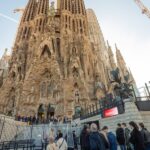 Emergency Services around Sagrada Familia, Barcelona | A Comprehensive Guide
Emergency Services around Sagrada Familia, Barcelona | A Comprehensive Guide Barcelona Aquarium's Oceanarium: Underwater Wonder
Barcelona Aquarium's Oceanarium: Underwater Wonder Discovering the Location of Sagrada Familia in Barcelona: A Must-Visit Landmark
Discovering the Location of Sagrada Familia in Barcelona: A Must-Visit Landmark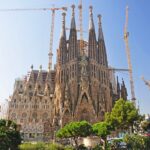 When Will the Sagrada Familia in Barcelona Be Finished?
When Will the Sagrada Familia in Barcelona Be Finished?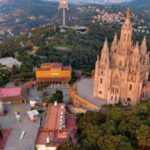 The Enchanting Sagrada Familia: A Must-See Gem in Barcelona, Spain
The Enchanting Sagrada Familia: A Must-See Gem in Barcelona, SpainIf you want to know other articles similar to The Iconic Sagrada Familia: Discover its Location in Barcelona you can visit the category WHERE YOU CAN GO.
Deja una respuesta

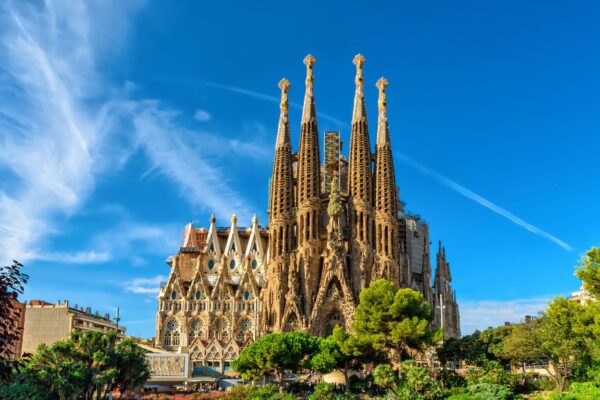
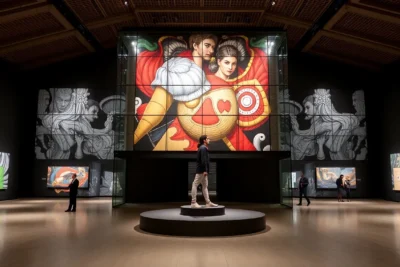
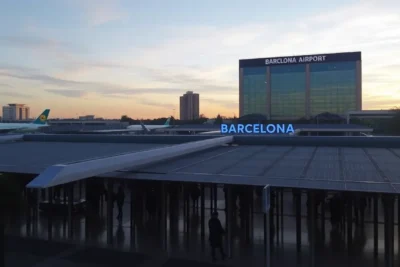

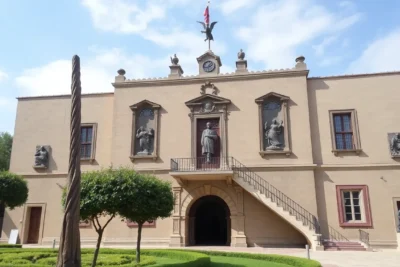

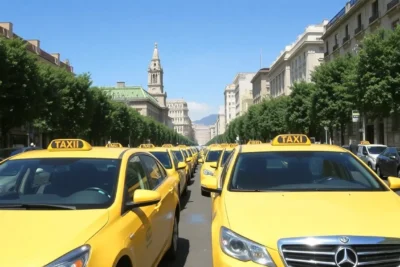
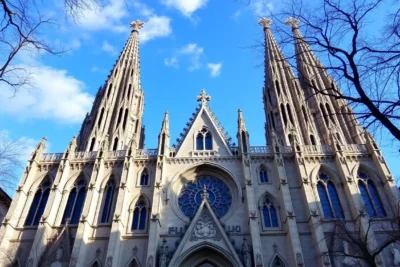

Read more!